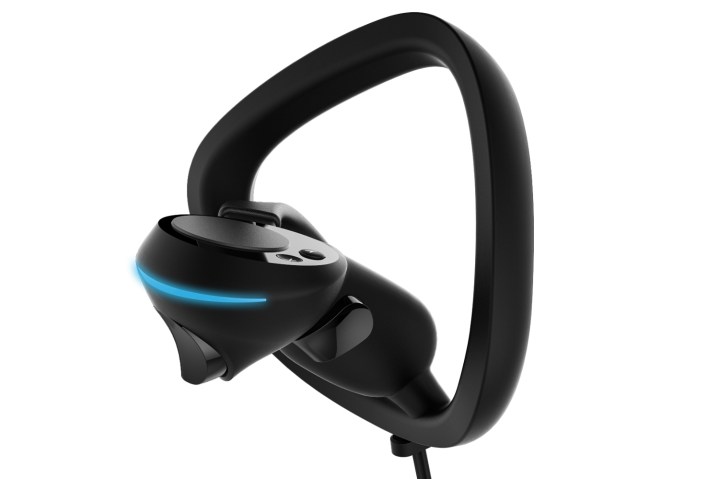
Pimax revealed a new knuckles-style controller that will ship with the company’s virtual reality headset. The prototype introduced on Tuesday, April 24, specifically focuses on right-handed gamers as their fingers wrap around the “stem” of the controller. It borrows from Valve Software’s still-unreleased “knuckles” design in that it supports all five fingers, not just two.
The new prototype includes a grip button on the left side of the controller’s “stem” accessed by your middle finger, a trigger pressed by your pointing finger, and a rounded control pad area where your thumb manages the thumbstick (or trackpad), menu, and system buttons. The controller’s stem includes sensors for using your ring and pinky fingers, too.
“We are looking to make a super comfortable controller with all fingers tracked. You do not need to hold it, you can relax in the games with your hands open, grab objects when close your hands, and release hands to throw objects naturally,” the company says. “There are sensors over the grip button. The controller tracks all your fingers while you hold it, and you can squeeze further with the grip button as well.”
If the prototype seems familiar, it looks like a distant cousin of the Romulan warbird in Star Trek: The Next Generation. But in reality, a hand strap simply connects to the right side of the controller while a second, larger ring resides over the entire hand. This larger component is the tracking contour, and as many customers point out, could be an issue when placing your hands near your face.
Pimax’s prototype is based on feedback from the community waiting patiently for the company’s virtual reality headset. The peripheral includes the grip, menu, system, and trigger buttons so it’s compatible with SteamVR and Oculus-based content. Pimax expects to complete the prototype in the third quarter of 2018 for testing, feedback, and additional improvements.
“For controller backers, we understand some of you are swaying between thumbstick and trackpad,” the company adds. “You will still have a chance to switch your option when the controller prototype comes out.
The prototype surfaces after Pimax explained why it continues to delay it’s “8K” virtual reality headset. Pimax originally targeted a January release, but pushed back the Kickstarter launch given the company was on its fifth prototype in December and exploring new hardware to better maintain high refresh rates. To appease backers, Pimax decided to release a pre-production model called M1, but even that model experienced a setback because the lenses due to arrive in February showed up late.
“Given the vendor will deliver the newly designed lens in early May, we are looking to ship M1 to testers in May, when the units have been assembled and tested,” the company said.
Pimax’s Kickstarter campaign promises the world’s first 8K VR headset sporting two displays with a 3,840 x 2,160 resolution each and a combined 200-degree field of view. The larger resolution will help reduce the “screen door” effect caused by viewing the dark spaces between each pixel on lower resolutions.


